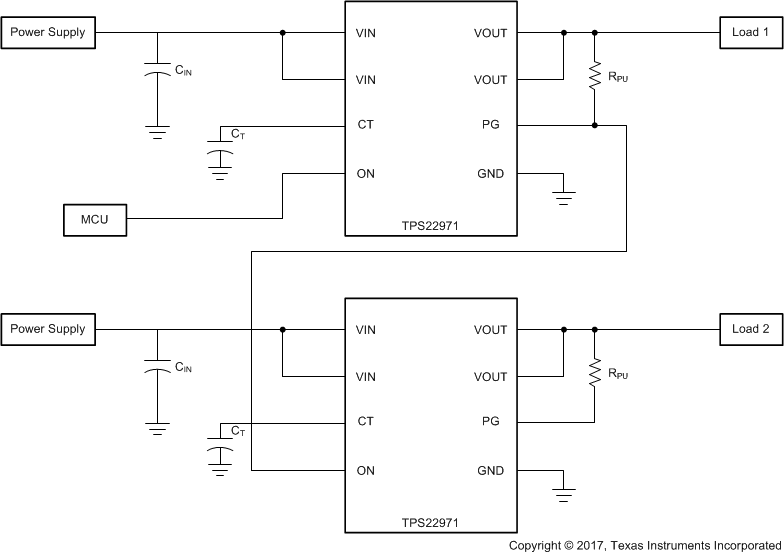ZHCSGK9B April 2017 – December 2017 TPS22971
PRODUCTION DATA.
9.1.3 Power Sequencing
The TPS22971 has an integrated power good indicator which can be used for power sequencing. As shown in Figure 26, the switch to the second load is controlled by the PG signal from the first switch. This ensures that the power to load 2 is only enabled after the same power to load 1 is enabled after the first switch has turned on.
 Figure 26. Power Sequencing
Figure 26. Power Sequencing